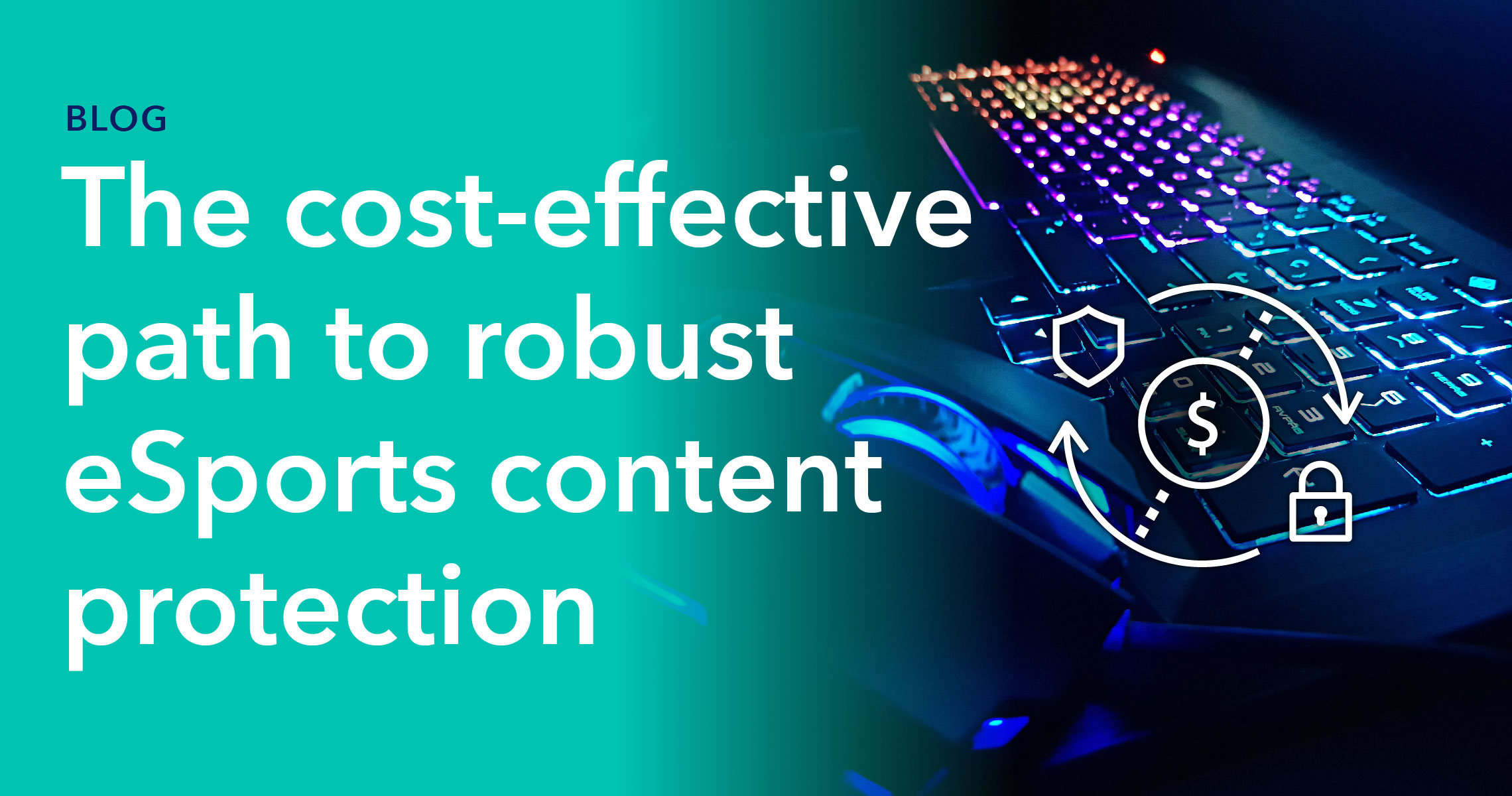The growing popularity of eSports is generating huge revenues for game manufacturers, content creators, and distributors. Unfortunately, this growth also fuels professional piracy and theft of eSports content, with an increase in scope and sophistication of attacks.
As eSports content creators and distributors look to solidify and expand revenue streams, protecting their assets remains one of their most significant challenges. Fortunately, cost-effective and robust solutions to fight piracy do exist and have been demonstrated during high-value live-streamed events. Such cloud-based content protection solutions are offered as part of ExpressPlay Media Security Suite, which provides comprehensive and cost-effective services to combat content and service piracy.

In our second whitepaper of this series, we take a closer look at how eSports content providers can reduce their risk and improve revenue security. Several factors need to be considered when choosing the right content protection solution, including:
- Capacity to execute robust and thorough hardening of attack points
- The flexibility of catering to specific and evolving needs of service operators
- Effectiveness and availability of customer support 7x24x365
- The total cost of ownership (TCO) and impact on ROI
- The technical complexity of deployment and ongoing use
Continue reading to learn how eSports content providers can use digital rights management (DRM) technology and services to secure their assets.
eSports content protection: The basics
We start with the basics. Any content that’s part of a subscription or pay-per-view model will be under threat from professional pirates, who aim to siphon off significant revenue from rights holders and operators. Even for free-to-view or ad-supported content, every person watching a pirate stream reduces potential ad revenue and valuable viewer metrics for legitimate operators.
So, whether streamed or downloaded content, encryption prevents unauthorized copying and re-distribution. Since streamed content is an essential element of the eSports and gaming ecosystem, the case is clear for adopting encryption across the board as a minimum, but it is not sufficient. To strengthen the protection, a DRM system is required. DRM systems perform user authentication, and once a user is authenticated, the content is decrypted and available to use subject to playback rules defined by the operator.
How DRM protects streaming asset value
There are a number of low-tech, basic techniques that streaming service providers have deployed to put obstacles in the way of piracy. These can be as simple as requiring passwords, though technically anyone with the username and password will be able to access the account and content. However, competition in the streaming market has led to major investments in high-quality UHD shows and improved live-streaming that require far stricter methods of content protection, namely DRM systems.
The methodology of industry-leading multi-DRM solution is to isolate the decryption keys and deliver them separately from the content in a secure process. By predicating the decryption process on valid licenses, which determine access and usage rights, only authorized users on authenticated devices receive decryption keys for that specific device and content.
However, the DRM ecosystem is highly complex and depends on the intersection of device manufacturers, multi-DRM service providers, and streaming content distributors.
The fragmented DRM environment
There are three DRM systems associated with the world’s major operating systems (OS), namely: Apple FairPlay for iOS, macOS, and tvOS; Microsoft PlayReady for Windows-based systems; and Google Widevine for Android devices. The majority of modern connected devices have built-in, native support for one of these three DRMs. However, there’s also a very large pool of connected devices, especially in Asia, with the open-standard Marlin DRM as their native DRM.

The native-supported DRM picture is further complicated by the fragmentation of client devices that run different versions of the same OS, especially true for Android OS, which can affect the ability of users to access their authorized content. To avoid the possibility of customers being locked out of their content, access and interaction between distributor and OS or device must be possible, regardless of the original equipment manufacturer (OEM).
For eSports providers looking to deliver a consistent, delay-free experience, this can only be guaranteed by using a multi-DRM system that enables instant key acquisition from DRM license servers.
How eSports providers can protect their assets
With the growing security concerns for eSports providers of all sizes, the ability to deploy a multi-DRM content protection solution is essential and ensures their services can reach as wide an audience as possible. Already in operation across the globe for an array of very large over-the-top (OTT) streaming providers, the software-as-a-service element of ExpressPlay DRM allows for multi-DRM interaction with a comprehensive and cost-effective technical toolkit.
The usage-driven cost basis (OPEX) means that all eSports distributors can deploy an effective content protection system with minimum or no setup costs or infrastructure purchases (CAPEX). With a flexible technology stack, ExpressPlay DRM delivers low-latency content protection and supports secure workflow integration with all private or public cloud-based encoding and packaging platforms through standard application programming interfaces (APIs) such as the Secure Packager and Encoder Key Exchange (SPEKE) API, version 2.0, for live media workflows.
To find out more about how the ExpressPlay multi-DRM service is ensuring content protection and, ultimately, revenue security for the growing eSports streaming scene, you can read our whitepaper or talk to our friendly security team.








